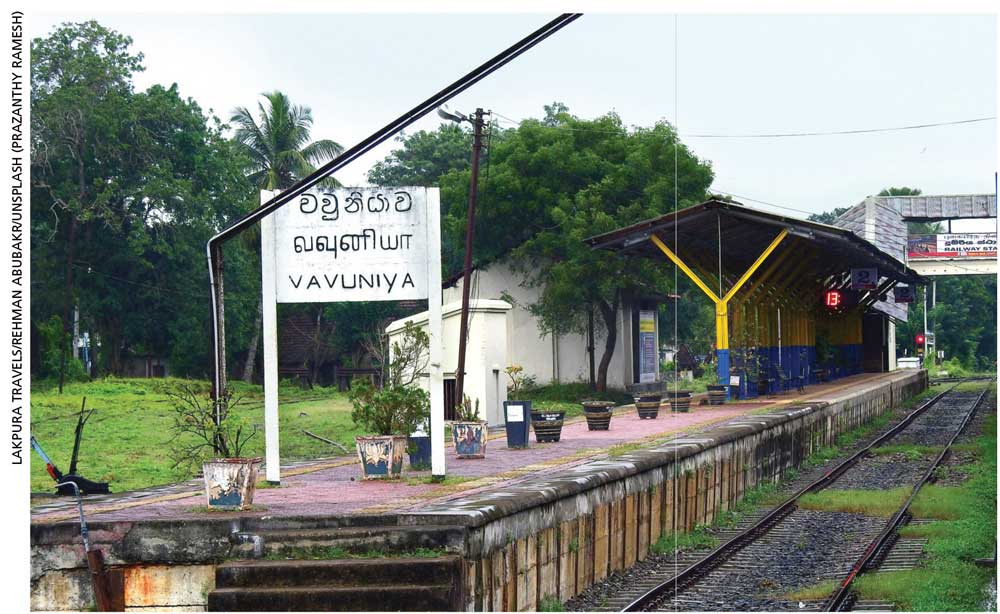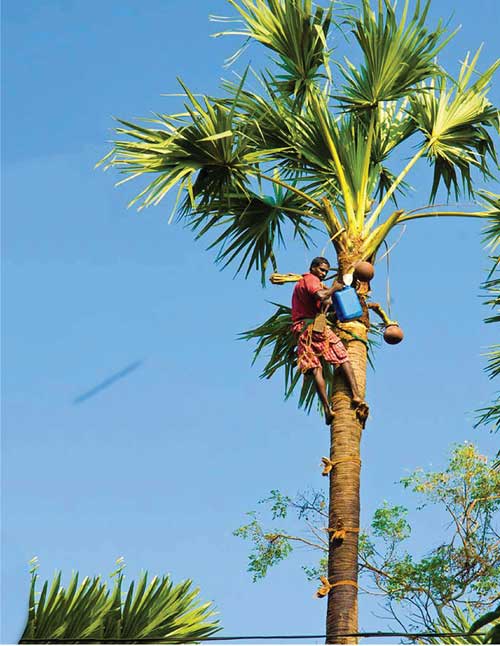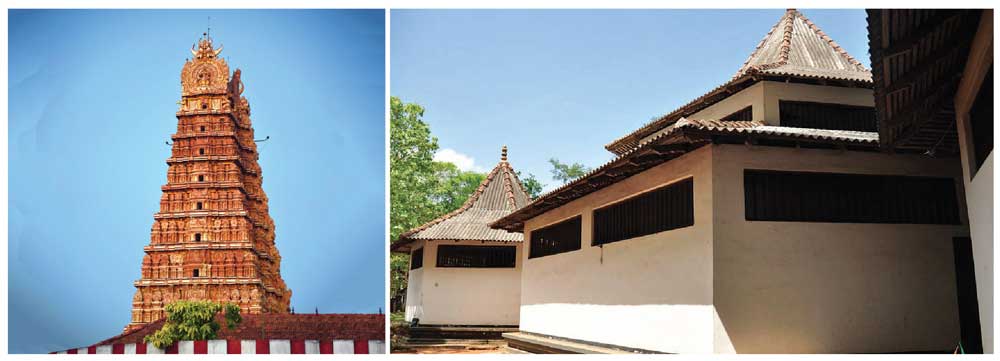SO SRI LANKA
GATEWAY TOWNSHIP
Faiths meet in Vavuniya
Nimanthi Bandaranayake visits a central locale in the Northern Province

On the edge of Sri Lanka’s Northern Province lies Vavuniya where history whispers from ancient temples, marketplaces bustle with activity and the spirit of resilience flows like a river through the hearts of its people.
Here’s a city that has witnessed the warp and weft of time, with each crease leaving its mark on the rich tapestry of its culture and heritage.
Vavuniya’s strategic location has long made it a crossroads where diverse cultures and communities intersect. Sinhalese, Tamils and Muslims coexist harmoniously, and contribute to its multicultural frame.
Despite the challenges Vavuniya faced – especially over the years of harsh civil conflict – it has emerged as a symbol of strength and renewal.
As you explore the town, you’ll discover a place where ancient Hindu temples stand as guardians of tradition, their intricate architecture and rituals offering a glimpse into centuries old practices. The Buddhist temples provide a serene escape with their peaceful landscapes and historic relics.
Vavuniya’s allure extends beyond its cultural sites because it serves as a gateway between the Northern Province and Anuradhapura in the North-Central Province.
The road to Vavuniya through Kurunegala and Anuradhapura takes travellers along scenic routes that meander through picturesque paddy fields and pristine forests, and offer them a breathtaking journey.
What truly sets Vavuniya apart is the resilience of its people. From the vibrant markets where the aroma of spices and nonstop chatter of vendors fill the air, to the bustling streets lined with shops, cafes and community gatherings, you’ll witness people who have emerged from adversity through a spirit of unity and determination.
History, culture and the human spirit converge in Vavuniya, and contribute to creating a captivating tapestry of experiences and stories waiting to be told.
As you traverse its streets and engage with Vavuniya’s warmhearted residents, you’ll discover a town that stands as a testament to the enduring power of community and the promise of a brighter future.
Fact File

KOVIL Sri Kandaswamy Kovil, which is also known as the Nallur Kandaswamy Kovil, is a revered Hindu temple located in the Jaffna Peninsula. This magnificent Northern Province kovil is dedicated to Lord Murugan and boasts exquisite South Indian Dravidian architecture with intricate stone carvings. The kovil plays a vital role in the region’s cultural and religious life as it hosts the annual vibrant Nallur festival, and attracts pilgrims and visitors from around the world. The Kandaswamy Kovil is a ‘must visit’ for those interested in the country’s diverse religious heritage.
TEMPLE Madukanda Vihara is a hallowed Buddhist temple that’s adorned with traditional Sri Lankan architectural splendour. This historic temple serves as a sacred sanctuary for religious devotion and meditation, as it hosts spiritual and cultural events that offer insights into the region’s profound Buddhist heritage. The heritage of Buddhism in Sri Lanka’s Northern Province is exemplified by this temple’s serene and reflective ambience. It remains a place of deep reverence for the local Buddhist community, and provides a haven for those seeking to connect with the spiritual and cultural essence of the region.
MOSQUE The Grand Jummah Mosque stands as a significant religious and cultural landmark. It’s admired for its intricate architecture and serves as a place of worship for the Muslim community as it hosts regular Jummah (Friday) prayers and religious events. The mosque also functions as a cultural centre and community hub, and aims to foster unity by providing a space for social gatherings and educational programmes. It’s a symbol of the town’s religious diversity, and a place where the Muslim community celebrates its faith and culture.
MUSEUM Under the administration of the Department of Archaeology, the Vavuniya Archaeological Museum is home to an interesting collection of local treasures. While its counterparts in ancient cities are more extensive, this museum’s modest exhibits include 4th and 5th century relics, pinched face terracotta figurines from Kilinochchi and 5th to 8th century Buddha statues carved from Mannar limestone. Visitors can also view idols of Hindu goddesses and Christian artefacts, all within a serene courtyard. Admission is free but photography requires prior permission.
FOREST Aptly named ‘Black Water Pond,’ the Kaludiya Pokuna in the eponymous forest enchants visitors with its pristine waters that reflect the surrounding lush greenery. Rich in historical significance, it boasts ancient ruins dating back to the Anuradhapura period. Birdwatchers revel in a diverse avian population while hikers explore verdant trails. This tranquil forest also provides a peaceful retreat for meditation, and is subject to conservation efforts that help preserve its natural beauty and biodiversity.




